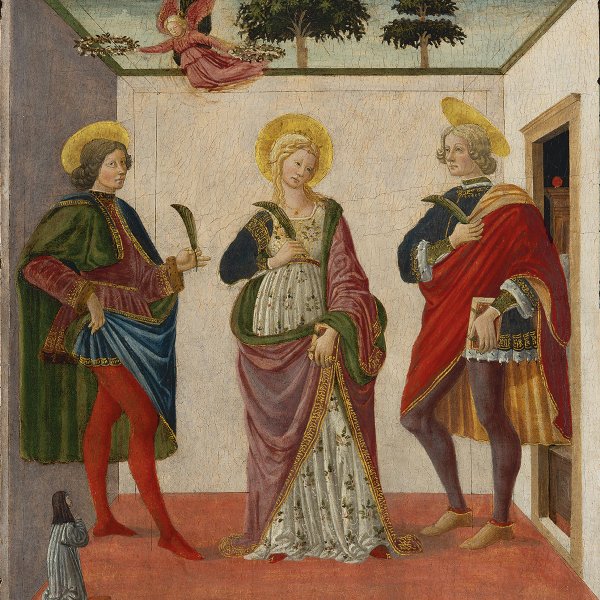Francesco Botticini
Florence, 1446/47-1498
Botticini was a Florentine artist whose real name was Francesco di Giovanni di Domenico and whose father was a painter-artisan. Francesco Botticini learned his profession from Neri di Bicci, who had inherited a flourishing workshop and for whom the young Botticini began to work in January 1459 at the age of only 13. On 24 June 1460 he left his master’s workshop and by 1469 was already an independent master as it is documented that he acted as a mediator during that year. From 1471 onwards he was a member of the confraternity of the Archangel Raphael of the church of Santo Spirito and one year later a member of the confraternity of Saint Luke.
Botticini’s style is characterised by his ability to combine elements from the art of his day, notably the work of Botticelli, Andrea del Castagno, Domenico Ghirlandaio, Filippino Lippi, Cosimo Rosselli and Verrocchio, for which reason some of his works were incorrectly attributed in the past. Among his early works is The Three Archangels with Tobias (Galleria degli Uffizi, Florence) of 1470, considered his masterpiece. Also important is The Assumption of the Virgin, commissioned by Matteo Palmieri (National Gallery, London) and dated to around 1474–75. The artist’s first dated work is the Sacrament Tabernacle, commissioned in 1484 and installed in 1491 in Empoli cathedral (now in the museum in that city). Also attributed to Botticini are The Virgin and Child with Saints, the tondo of The Virgin and Child with Saint John the Baptist and two Angels (both Musée du Louvre, Paris), and The Virgin and Child enthroned (National Galleries of Scotland, Edinburgh), of around 1495.
Botticini’s style is characterised by his ability to combine elements from the art of his day, notably the work of Botticelli, Andrea del Castagno, Domenico Ghirlandaio, Filippino Lippi, Cosimo Rosselli and Verrocchio, for which reason some of his works were incorrectly attributed in the past. Among his early works is The Three Archangels with Tobias (Galleria degli Uffizi, Florence) of 1470, considered his masterpiece. Also important is The Assumption of the Virgin, commissioned by Matteo Palmieri (National Gallery, London) and dated to around 1474–75. The artist’s first dated work is the Sacrament Tabernacle, commissioned in 1484 and installed in 1491 in Empoli cathedral (now in the museum in that city). Also attributed to Botticini are The Virgin and Child with Saints, the tondo of The Virgin and Child with Saint John the Baptist and two Angels (both Musée du Louvre, Paris), and The Virgin and Child enthroned (National Galleries of Scotland, Edinburgh), of around 1495.





